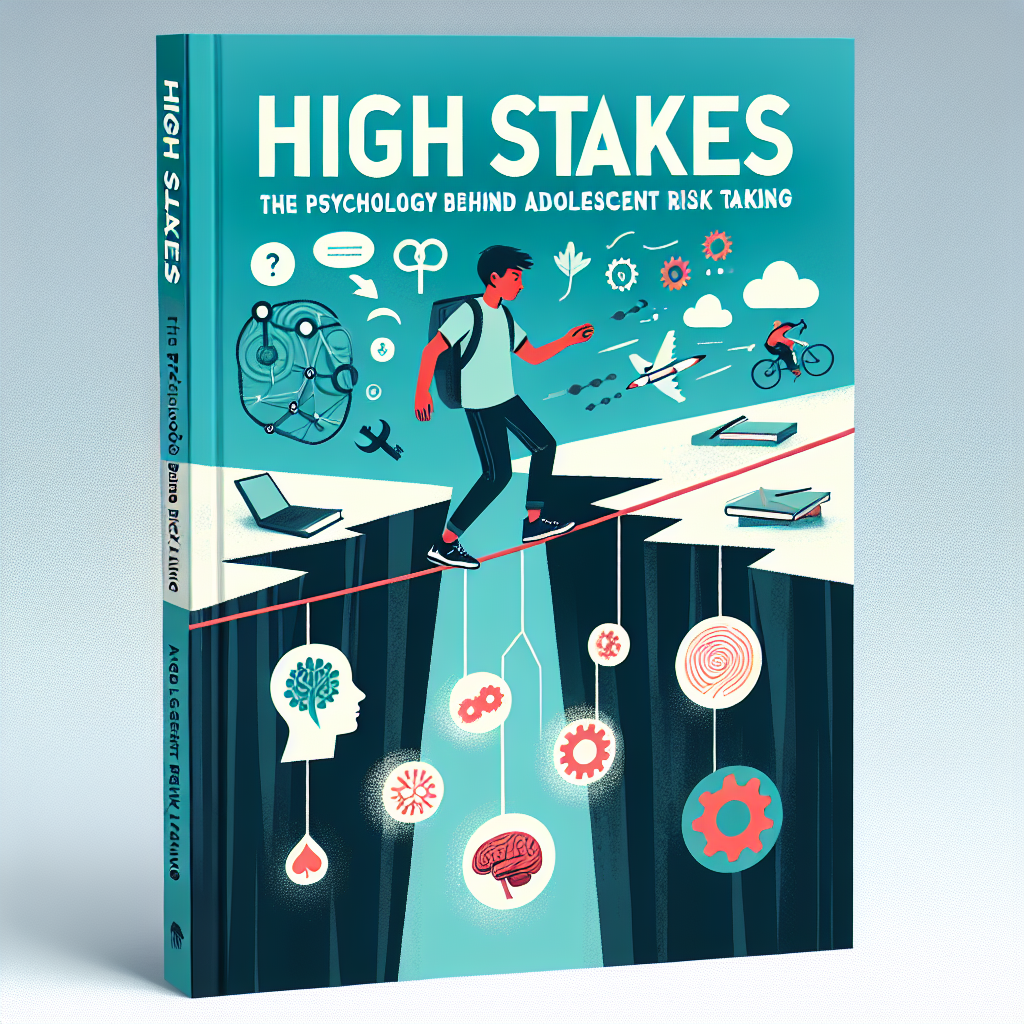
Introduction
Adolescence is a rollercoaster ride of emotions, filled with moments of exhilaration and, at times, perilous choices. In this critical phase of life, teens often engage in risk-taking behaviors that can leave parents bewildered and concerned. From reckless driving to experimenting with substances, these decisions may seem irrational, but they are rooted in complex psychological factors. This article, High Stakes: The Psychology Behind Adolescent Risk Taking, will explore the critical aspects of adolescent behavior, delve into the underlying psychology, and uncover how society can guide youth toward healthier choices.
Why Do Teens Take Risks?
Every parent has asked this question, "Why do teens engage in high-risk activities?" Although it might seem that they are driven solely by impulse, several underlying mechanisms dictate these behaviors. One notable aspect is the developmental biology of adolescence, where changes in the brain significantly influence decision-making processes.
The Brain’s Developmental Journey
During adolescence, two key areas of the brain—the prefrontal cortex and the limbic system—undergo changes but develop at different rates. The limbic system, responsible for emotions and reward, is highly active during these years, while the prefrontal cortex, which handles reasoning and impulse control, lags behind in maturation. This imbalance explains why adolescents might chase thrills, showcasing High Stakes: The Psychology Behind Adolescent Risk Taking.
Table 1: Brain Development Milestones
| Age Range | Key Development | Impact on Behavior |
|---|---|---|
| Early Teens | Increased Limbic Activity | Heightened sensitivity to reward; impulsivity |
| Mid Teens | Maturing Prefrontal Cortex | Improved reasoning but still vulnerable to peer influence |
| Late Teens | Near Adult Brain Maturity | Greater self-control and risk assessment abilities |
The Role of Peer Influence
One of the most significant factors in adolescent risk-taking is peer pressure. As teenagers navigate social hierarchies, their desire to fit in can often override individual judgment. Their brains are wired to seek rewards, and the approval of peers serves as a powerful motivator.
Case Study: The Peer Effect
In a 2014 study conducted by the University of California, researchers observed how teens behaved when in groups versus alone. They found that teens were more likely to take unnecessary risks, such as speeding in cars, when with friends compared to when they were alone.
Analysis: This study highlights the interplay of social dynamics and risk-taking, emphasizing the need for supportive environments that foster open communication and understanding.
Risk-Taking vs. Risk-Aversion
Not all teens engage in risky behavior; some exhibit risk-averse tendencies. Personality traits significantly influence this dichotomy, where thrill-seekers may embrace uncertainty while others prefer safety.
Personality and Risk Profiles
Research has shown that certain personality traits, such as high sensation-seeking and low self-control, correlate with increased likelihood of engaging in risky behaviors.
Table 2: Personality Influences on Risk-Taking
| Trait | Risk-Taking Tendency |
|---|---|
| High Sensation-Seeking | Increased risk-taking behaviors |
| Low Self-Control | Likely to engage in impulsive acts |
| High Conscientiousness | More risk-averse, focused on stability |
The Impact of Environment
The environments in which adolescents grow up—families, schools, communities—play crucial roles in shaping their risk-taking behaviors. A nurturing environment that promotes open discussions can serve as a protective factor against high-risk acts.
Case Study: The Role of Family Communication
A study at the University of Michigan demonstrated that adolescents who engaged in regular, meaningful conversations with their parents were less likely to experiment with drugs and alcohol.
Analysis: This finding underscores the influence of a supportive family environment in moderating perilous risk-taking, demonstrating that open dialogues form protective barriers.
Cultural Perspectives on Risk-Taking
Cultural contexts also frame how adolescents perceive and engage in risk-taking behaviors. In some cultures, adventurousness is celebrated, while in others, restraint is valued.
Case Study: Cross-Cultural Comparisons
Research comparing risk-taking behaviors among U.S. and Japanese adolescents found that American teens tend to take more risks, largely influenced by societal values that reward individuality and exploration.
Analysis: Understanding cultural nuances aids in developing tailored interventions and support systems that resonate with specific adolescent groups.
Educational Strategies for Promoting Safer Choices
Educators and parents have vital roles in guiding teens toward safer decision-making. Programs that reinforce positive youth development can effectively channel risk-taking behaviors into more constructive outlets.
Proven Educational Interventions
Social-Emotional Learning (SEL): Incorporating SEL programs in schools encourages self-awareness and better decision-making, equipping students to resist negative peer pressure.
- Interactive Workshops: Engaging workshops around risk scenarios allow adolescent participants to discuss consequences and develop sound decision-making strategies.
Motivational Insights for Parents and Educators
Encouraging adolescents to embrace positive risk-taking—like participating in sports or starting a new hobby—can mitigate the allure of perilous activities. Here, we sum up sectors in which healthy risk-taking can flourish.
The Importance of Guided Experiences
Mentorship programs, extracurricular activities, and structured environments (like sports teams) can provide adolescents with safe avenues for exploring their limits.
Conclusion
Navigating adolescence is akin to walking a tightrope—balance and awareness are essential. By understanding the complex interplay of psychology, biology, and environment, we gain insights into the high stakes of adolescent risk-taking. This knowledge offers parents, educators, and caregivers the tools needed to support teens in making healthier life choices.
Instead of viewing adolescent risk-taking solely as a perilous phase, we can approach it as a vital aspect of their growth journey. By fostering open communication, reinforcing positive choices, and understanding the underlying psychology, we can help adolescents thrive amidst the challenges of growing up.
FAQs
Q1: Why do teenagers seek out high-risk activities?
Teens often seek thrills due to a combination of biological changes, peer influence, and a drive for independence. These factors fuel their eagerness to explore boundaries.
Q2: At what age do adolescents become less likely to take risks?
Research indicates that as young adults approach their late teens and early twenties, they gain better self-control and improve their risk assessment skills, becoming more cautious.
Q3: How can parents talk to their teens about risk-taking?
Open, non-judgmental conversations that encourage teens to express their feelings about risk can foster trust. Parents should share experiences and openly discuss the consequences of risky behaviors.
Q4: Are all risk-taking behaviors harmful?
Not all risks are negative; some experiences, like trying out for a sports team or giving a public speech, can be beneficial and promote personal growth.
Q5: How can schools help students manage risk-taking?
Implementing Social-Emotional Learning (SEL) programs, offering workshops for decision-making, and creating safe, engaging environments can significantly reduce harmful risk-taking behaviors among students.
By grasping the elements of High Stakes: The Psychology Behind Adolescent Risk Taking, we unlock the potential to bolster a supportive framework for nurturing resilient youths. Let’s empower adolescents to take calculated risks that lead to personal development and positive outcomes.

















